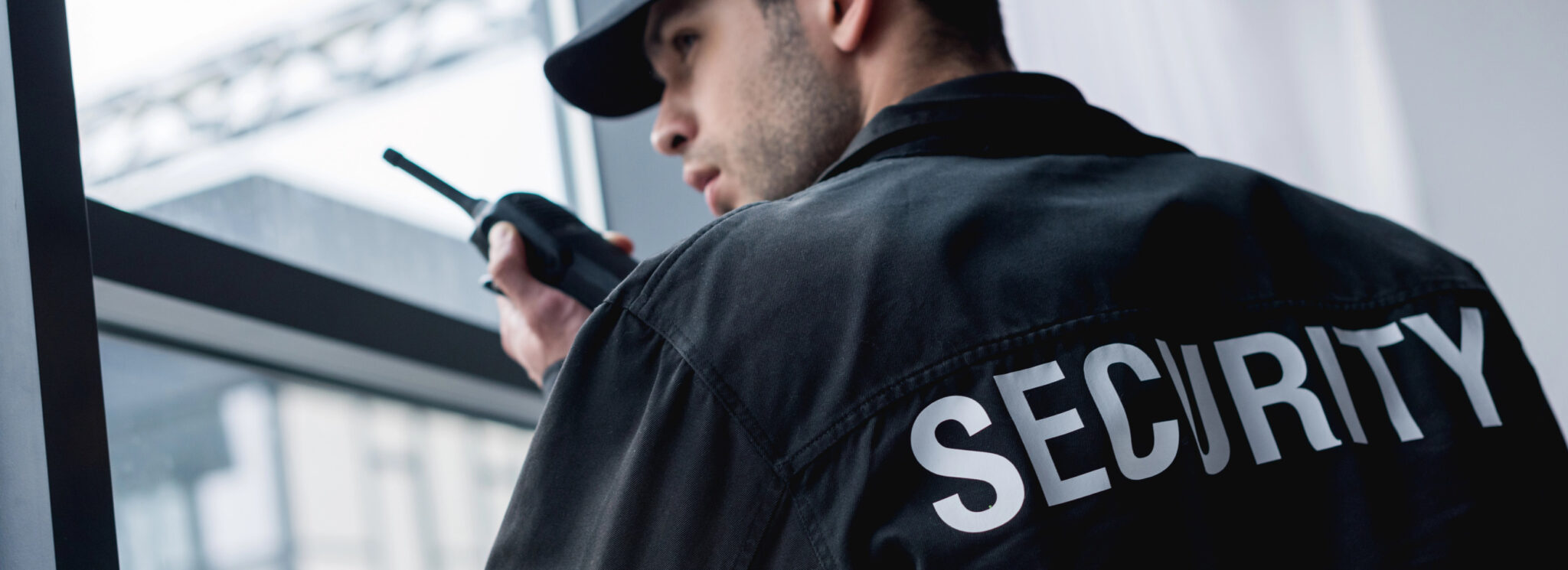What does a security guard do and what skills are needed? Security guards protect people and property by patrolling, monitoring, and responding to incidents. In this post, you’ll learn about their duties, types of security roles, training and certifications, and work environments.
Key Takeaways
- Security guards help keep people and premises safe and secure by patrolling, incident response, and access control.
- There are many roles in the security industry from unarmed guards to specialist security officers, each requiring different training and skills.
- Technology like remote video monitoring and real-time alerts makes security more effective.
Security Guard Duties
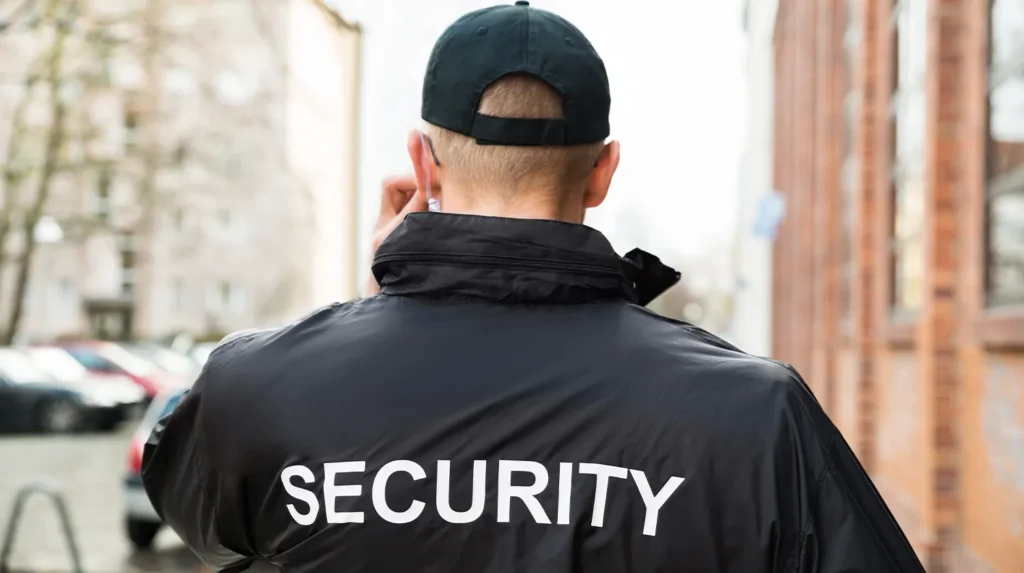
At the heart of the security industry, security guards work 24/7 to protect property and people. They monitor properties for suspicious activity, enforce rules to keep the peace, and respond to emergencies. They are deterrents and first responders to potential threats.
Patrolling and Monitoring
Patrolling and monitoring are the bread and butter of a security guard’s job. An unarmed security guard can be a visible deterrent to criminal activity. Their presence alone can help deter crime, so observation and reporting are key. On foot or in a vehicle, security officers walk properties to detect and respond to potential threats, ensure safety protocols are in place and any unusual activity is reported.
Patrolling keeps the peace and gives people in that guarded area a sense of security. Trained security guards can spot suspicious activity and potential security breaches. Reports from security personnel allow companies to trend and improve services.
Incident Response and Reporting
Incident response is part of a security guard’s job. In an emergency, security professionals are the first to assess and manage the situation to keep things safe and secure. Their training covers everything from minor incidents to major security breaches.
Reporting incidents through reports helps with investigations and compliance.
Access Control
Only authorized people should enter restricted areas. Trained in state laws and procedures, security guards can control the access points. This is the key to preventing unauthorized access and potential threats to the premises they are protecting.
Security Roles
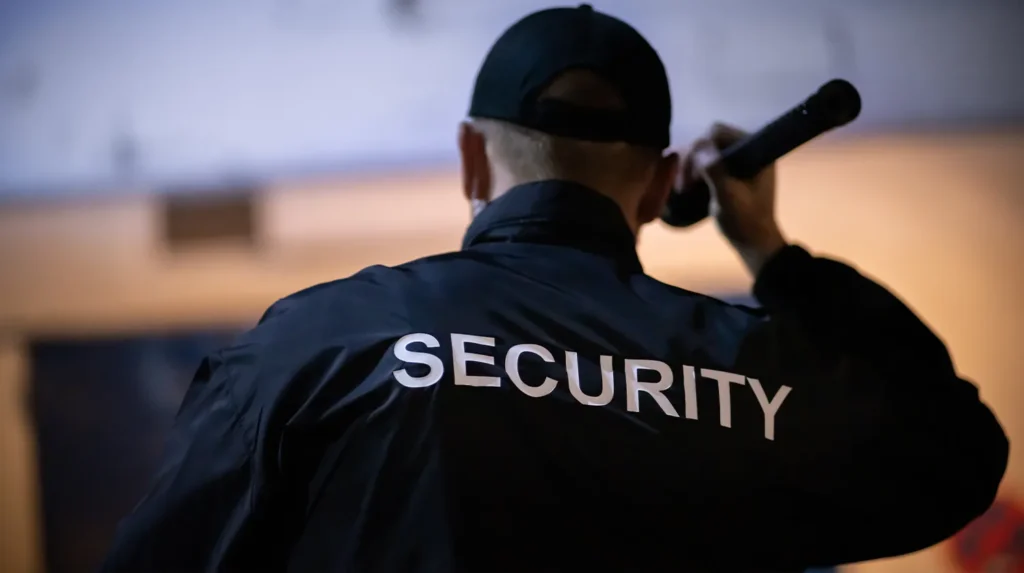
There are many roles in the security industry to suit different security needs. Here are some examples of different types of security personnel.
- Unarmed guards who watch
- Armed guards for high-risk situations
- Specialist security officers including bail enforcement agents and gambling surveillance officers who require extra training.
Unarmed Security Guards
Unarmed security guards watch and report without carrying weapons. Their presence can deter crime as they secure designated areas and control access. An unarmed security guard walks the premises, monitors surveillance equipment, and responds to incidents. They can be proactive in preventing illegal activity.
Unarmed guards can control entry and exit points to prevent unauthorized access. They can make you feel safe and create a safer environment. Detailed documentation of events and irregularities allows security companies to respond to threats.
Armed Security Guards
Security guards with guns can provide extra protection in high-risk situations. Trained to use weapons, they can intervene to protect people and property. Their job is to respond to threats and emergencies.
Armed guards can be a big deterrent to crime as they are the physical security of the environment they are protecting.
Specialist Security Officers
Security officers require specific training and skills for their role in the industry. Jobs like bail enforcement agents, bodyguards, and gambling surveillance officers require specific expertise to do their job. These professionals get extra training to meet the requirements of their role so they can handle complex situations.
For example, gambling surveillance officers rely on experience in security and video surveillance to monitor gaming operations and prevent fraud. Other specialist roles may require knowledge of specific laws or physical security measures. Specialization makes security services more effective and provides targeted protection for different environments.
Training and Certification
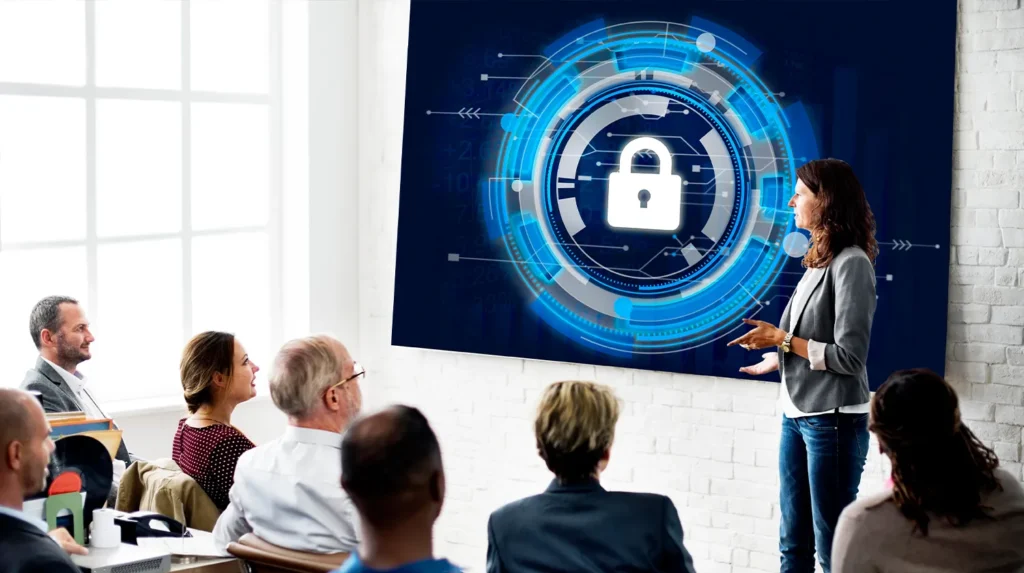
Training and certification prepare security guards for the job. Training is tough and licensing must comply with state laws.
Basic Training
Basic training covers state laws, security procedures, and emergency response. Unarmed security guards focus on physical skills, self-defense, and watching and reporting suspicious activity. Scenario-based drills and regular refresher training help guards practice in real-life scenarios to stay on high alert.
Armed security guards go through extensive training in firearms handling, legal use of force, and emergency response for violent situations. Specialist roles like bail enforcement agents require extra training beyond foundation training to get them ready for their role.
Advanced and Annual Training
Higher level training prepares security guards for more complex and high-risk situations. This includes weapon training and advanced emergency response. Annual training keeps security personnel up to date with industry best practices and regulatory changes.
Licensing and Certification
Most states require security guards to undergo a background check and complete a minimum number of hours of training – eight to 40 hours depending on the state. Security personnel must also meet age requirements and have a clean criminal record. These strict licensing requirements mean only qualified people are in charge of public safety.
Continuing education is required to maintain licensure and keep security personnel up to date with industry best practices and laws. Ongoing training and certification help improve security guards’ skills and compliance with state regulations and industry standards.
Security with Technology
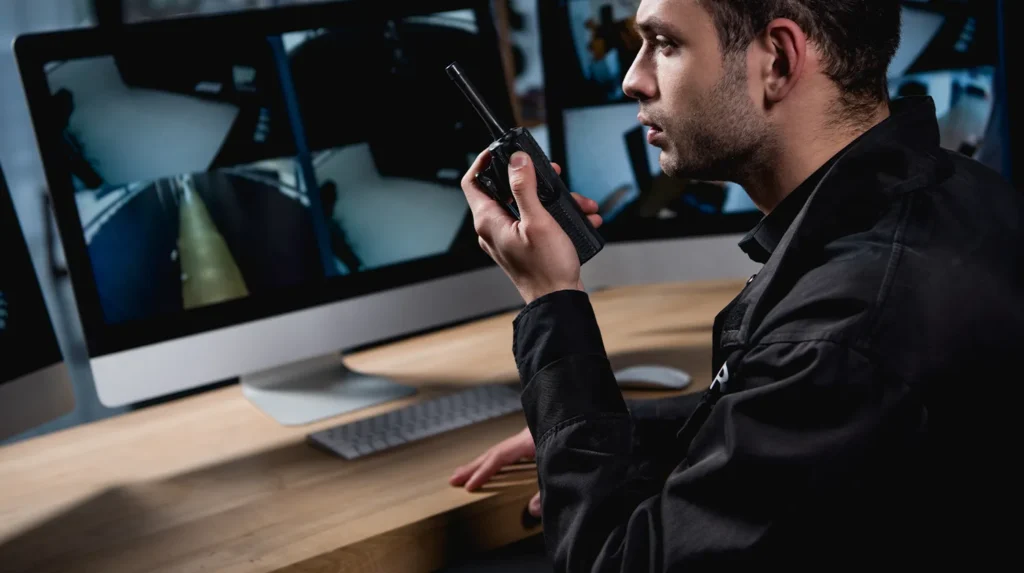
Technology has changed the security industry, making it more efficient and effective. Remote video monitoring and real-time alerts allow security personnel to respond faster and more accurately to potential threats. These advancements help with monitoring and incident management and can make services more robust and cost-effective.
Combining technology with human intelligence is a balanced and efficient way of managing security.
Remote Video Monitoring
Remote video monitoring allows security personnel in a remote location to monitor live feeds across multiple sites or areas at the same time. This increases coverage, helps with early detection, and allows for quicker response.
AI and machine learning improve live feeds and detect suspicious activity. Trained security operators can contact on-site security guards and/or local police if they see something suspicious on the property. Remote video monitoring is a powerful tool for securing environments.
Real-Time Alerts
Real-time alerts help speed up the process of getting security personnel to the scene faster. Remote video monitoring provides live feeds so security personnel can be notified immediately of suspicious activity. When technology and security personnel work together, incident response can happen faster and more effectively.
Technology and Personnel Working Together
Human expertise with technology can be a more efficient and cost-effective solution. This combination provides better protection against threats and offers cost savings.
Security guards on patrol can deter criminal activity, and technology like remote monitoring adds more layers of security.
Working Environments for Security Guards
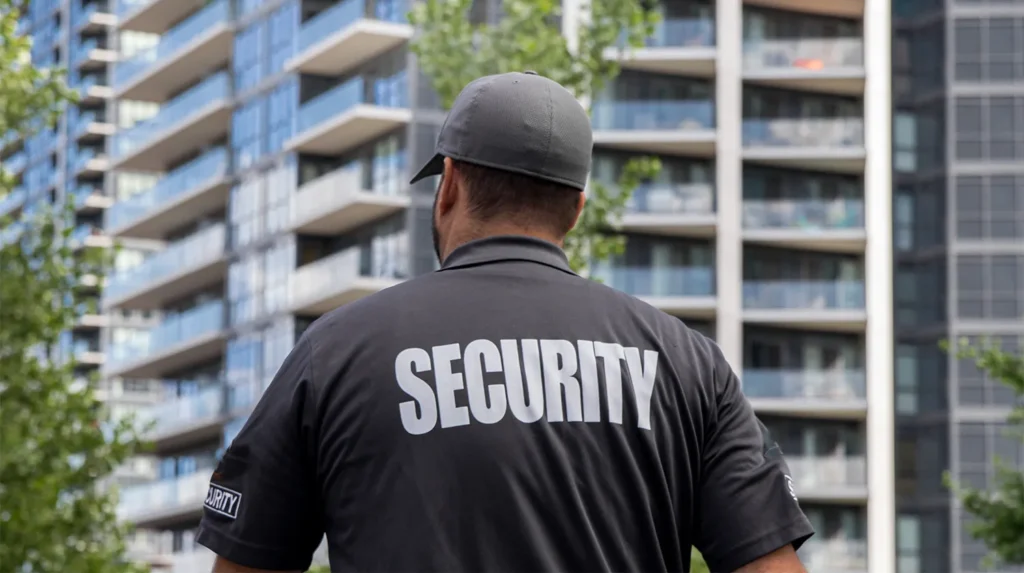
Security guards work in many places, each with its challenges and requirements. Office buildings, construction sites, multifamily communities, etc. Here are the roles and responsibilities for each.
Office Buildings
In the office, security personnel control access points and monitor the surveillance systems to keep employees and visitors safe. Live feeds allow security personnel to see multiple areas at the same time, so they have better monitoring and situational awareness.
Security patrols, whether on foot or in vehicles, add to the security presence to make the workplace safe.
Construction Sites
Security guards can protect valuable assets on a job site. They are a physical presence that can deter theft, vandalism, and unauthorized access. They can patrol the site perimeter, control who enters and exits, identify safety hazards, make sure workers and visitors comply with safety protocols, and keep logs and reports of any incidents.
Multifamily Communities
In multifamily communities, security guards keep the environment safe and secure for residents. Because residents value living in a safe community, having a security guard presence can help with rental and occupancy rates and overall property value. Guards can patrol the property and respond to incidents to ensure safety protocols are followed and potential hazards are addressed quickly.
Analytics-driven surveillance technology can detect unusual movements and deter theft and vandalism in parking and common areas. Security guards create a sense of community safety and well-being and help make multifamily properties more attractive to residents.
Professionalism and Compliance
In the security industry, professionalism and compliance are critical. Security professionals must follow company policies, laws, and ethics to build trust and reduce risk.
Uniforms and appearance, legal and ethical standards, and client management are important for a professional and compliant service.
Uniforms and Appearance
Uniforms are part of the security guard industry. They build a perception of professionalism and trust and make security personnel visible. Uniforms can match client preferences and security needs.
Legal and Ethical Standards
Security guards must know and follow local, state, and federal laws to operate legally and avoid liability. Ethical behavior, including fairness and impartiality, is key to maintaining public trust and avoiding the appearance of bias. By doing so, security guards can build trust with the community they serve.
Client Management
Managing clients helps deliver customized security solutions. Knowing their security needs allows security guards to respond better. Focusing on clients can lead to better communication and more effective security.
Career Outlook and Salary Expectations
Security guards have good career prospects due to the high demand for security services. This section looks at job growth, salaries, and career progression in the security industry.
Job Growth
According to the U.S. Bureau of Labor Statistics, the security guard industry is expected to grow 2% from 2023 to 2033. That’s over 162,000 openings a year to replace workers moving into other jobs or retiring.
Salary
Security guard salaries vary greatly depending on the job and industry. As of May 2023, the median annual salary for security guards was $37,070. That’s $17.83 an hour. Gambling surveillance officers made $39,210 a year during the same time.
Summary
Security guards work hard to keep us safe, often without recognition. They do many tasks including surveillance, incident response, and control of entry points. The security industry recognizes the complexity of its job and emphasizes extensive training and modern technology like remote video monitoring to keep the environment secure.
Contact us today to learn more about remote video monitoring and how we can help on-site security guards protect commercial properties.
Frequently Asked Questions
What do security guards do?
What kind of security personnel are there in the security industry?
These are the different types of security needed in different situations.
What training and certification do security guards need?
How does technology help?
This combines the benefits of technology and human supervision to make security more efficient and cost-effective.
